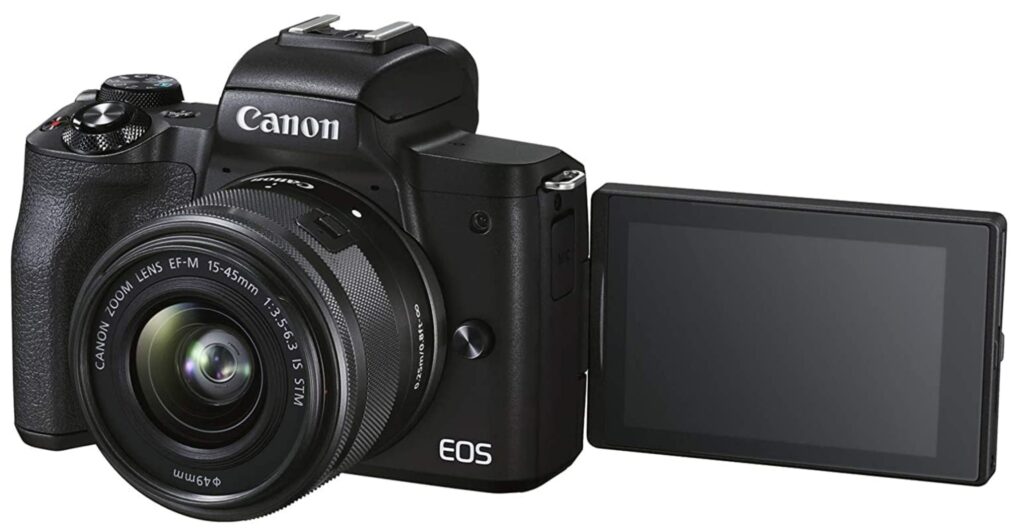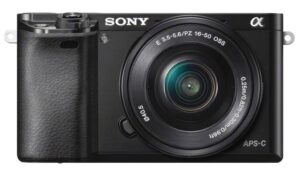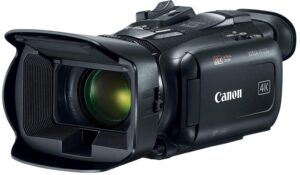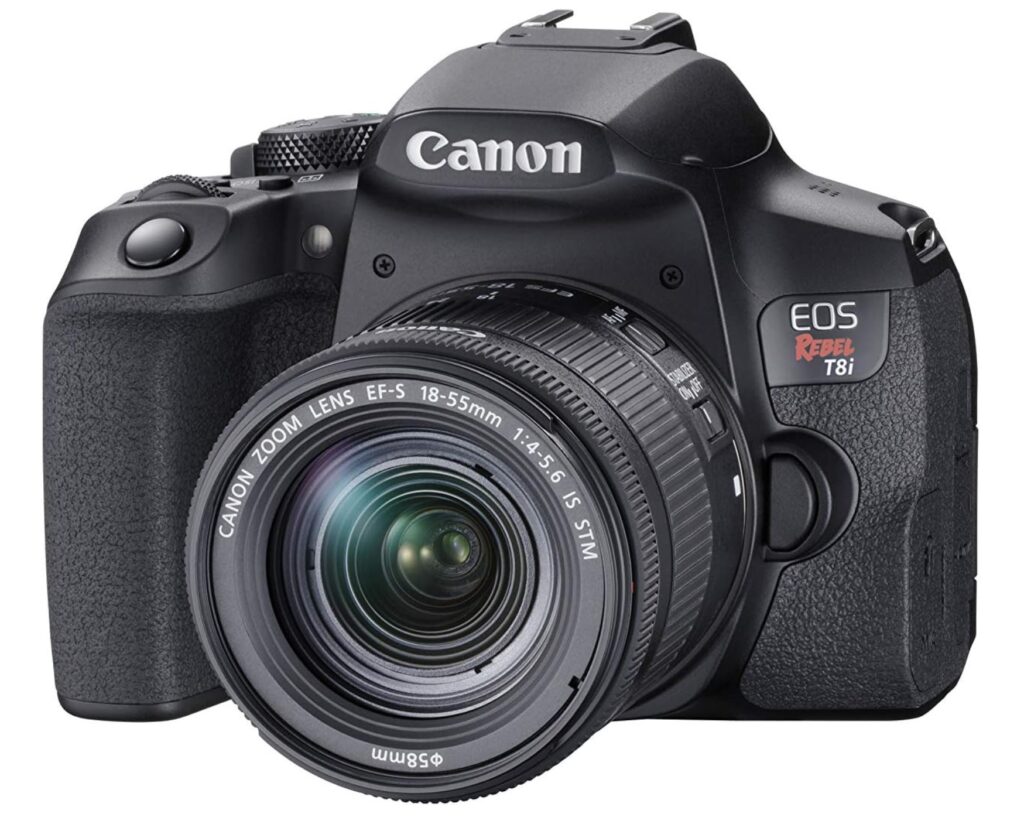Some people might be starting their careers as a videographer and need good recommendations on what kind of technology they should use. Others may be small business owners looking to begin their marketing journey but need reliable equipment to get them started. There could also be some who simply want a good recommendation on the best video cameras for beginners.
Modern devices come with all kinds of bells and whistles for professionals who know what all those confusing buttons do. However, those starting out rarely need all of those settings to create a great shot. Here are a few selections of the best video cameras for beginners and why they might be so valuable.
What is the best video camera for beginners?
| Model | Screen Size | Focal Length | Video Resolution | Optical Zoom | Other Features |
|---|---|---|---|---|---|
| 1. Panasonic HC-V180K | 2.7 inches | 2.06 – 103 millimeter | 1080p | 50x/90x | 5-axis image stabilizer |
| 2. Nikon D3300 | 3 inches | 18 – 55 millimeter | 1080p | 3x | 11 point autofocus system |
| 3. Canon EOS M50 Mark II | 3 inches | 24 – 72 millimeter | 2160p | 0x | 4K UHD 24p and HD 120p for slow motion video |
| 4. Fujifilm X-M1 | 3 inches | 16 – 50 millimeters | 1080p | 3.1x | Simple one handed operation |
| 5. Nikon D3500 | 3 inches | 18 – 55 millimeter | 1080p | 3x | Full HD videos with monaural sound |
| 6. Sony Alpha a6000 | 3 inches | 16 – 75 millimeters | 1080p | 3x | 60p and 60i frame-rates |
| 7. Canon VIXIA HF G50 | 3 inches | 30.6 -612 millimeters | 1080p | 20x | 8-bladed circular aperture |
| 8. Panasonic LUMIX GH6 | 3 inches | 12 – 60 millimeters | 2160p | 5x | 25MP sensor and Venus engine |
| 9. Sony ZV-1 | 3 inches | 24-70 millimeters | 1080p | 3x | Real time eye autofocus |
| 10. GoPro HERO 9 Black | 2.27 inches | n/a | 2880p | 8x | 5k resolution |
| 11. Canon PowerShot G7 X Mark III | 3 inches | 24-100 millimeters | 2160p | 4.2x | An f/1.8-2.8 maximum aperture range |
| 12. Canon Rebel T8i | 3 inches | 18 – 55 millimeters | 2160p | 0x | 4K 24p video capability |
1. Panasonic HC-V180K

Despite its size, this is a powerful little camera. It allows the user to capture stills while filming, which some might find helpful for additional promotional material. The Panasonic HC-V180K also features a wide-angle lens for taking in whatever the videographer needs. It also has a stabilizer if there is no tripod and hand-recording is necessary. While the description does advertise noise reduction in dim settings, reviewers do say this camera may not be the best for these conditions.
At just over $200, the Panasonic HC-V180K is unfortunately likely one of the cheapest of the best video cameras for beginners. Decent and reliable devices are going to cost a significant amount. However, for being able to shoot in full HD 1080p and offer filters, this piece has a fair bang for its buck.
2. Nikon D3300

Even though the Nikon D3300 is a high-quality digital-single lens reflex (DSLR) camera, it only features a few buttons on the back. These cameras often offer superior capturing capabilities — this device is no different. It can capture video at multiple frames per second (fps) settings, which isn’t too shabby for its price point. This camera too offers HD 1080p video, but also has 11 focus points, so whatever it’s taking in stays in focus until they leave the shot.
Many Amazon reviewers tout the Nikon D3300 as a fantastic starting DSLR camera and some even offer ideas for accessories. Those who can afford to spend a little more might find great success with this piece.
3. Canon EOS M50 Mark II

One great feature of the Canon EOS M50 Mark II is its eye-detection feature. This addition means the device can recognize when it captures an eye and ensures the subject stays in focus. It can also connect to WiFi and create livestreams on YouTube. For starting entrepreneurs who want to connect with their audience, this is an excellent ability. However, its video-capturing capabilities are even more impressive.
This camera can shoot video in 4K HD at 2160p resolution — double the detail of many other devices. It also has the ability to film in slow motion if this is something users are interested in. The specs on Amazon say the Canon EOS M50 Mark II can film videos at 120fps, which is fantastic if users need to record something fast. While this particular camera is up there on the price scale, it could be a worthwhile investment for all of the incredible features it offers.
4. Fujifilm X-M1

The Fujifilm X-M1 is not a DSLR like the last two devices — it is instead mirrorless. This aspect makes it a decent bit lighter than the previous Nikon and Canon. It also has no viewfinder, which photographers may not like, but videographers might have no issue with. However, it also features a touch screen, which makes it relatively easy to use single-handedly. Fujifilm prides itself on its devices’ color captures and it promises this camera has the same standards.
With its WiFi connection, the user can edit their videos and upload the creation directly on the camera. That feature makes it one of the best video cameras for beginners because it offers incredible ease of use. It can also capture video in 1080p at 30fps, but its lightweight property may be more appealing to those who want to go on shoots and not need a tripod for clear footage.
5. Nikon D3500

The Nikon D3500 is the fancier sibling to the Nikon D3300. The company boasts that this camera’s sensor is 15 times larger than a smartphone’s, making the picture quality far superior. It also offers connection to Nikon’s SnapBridge app, which lets the user transfer their captures to their phone for ease of sharing on social media. The app can also act as a Bluetooth remote for the camera, allowing them to activate it at a distance.
Like the Nikon D3300, this device also has 11 focus points, so the subject always stays clear in the shot. The Amazon listing does not include the fps, but it probably has the same various setting. So why the increase in price for a similar camera? Users say the Nikon D3500 has a better battery life, more frames per second for image shooting and is lighter weight than its predecessors. While newer isn’t always better, recent models often have advantages over earlier ones.
6. Sony Alpha a6000

The Sony Alpha a6000 is another powerful little camera whose size betrays it. It has a size comparable to the Fujifilm X-M1, but does have a viewfinder users might find beneficial for lining up shots. However, it is electronic, so it displays any effects before taking the video. This compact device features an excellent image-processing chip Sony promises can faithfully recreate details and textures. It too has WiFi connectivity, so sending the videos to a mobile device for quick editing is a breeze via the touchscreen.
The company also boasts that this camera has a 20% higher sensitivity than its NEX-7 model. This feature means videos and photos in low light still come out clear and beautiful. It offers 1080p video recording at 24 to 60fps — pretty excellent capturing capabilities for a starter camera. The Sony Alpha a6000 also allows users to select multiple video formats for ease of uploading their content to a variety of devices and platforms.
7. Canon VIXIA HF G50

This camera is the most expensive one on the list, ringing in at just over $1,000. If someone has that money to spend, the Canon VIXIA HF G50 is one of the best video cameras for beginners. It also is the only one that looks like the old home-movie camcorders some might remember their parents using. But this is no average camera — it offers 4K video resolution and image stabilization many shoots can benefit from.
It also has a wide lens, so users can capture almost anything they need in one frame. Its superb image processor also offers fast- and slow-motion recording. It can also find use as an excellent livestreaming camera — find out how on Canon’s website. All in all, those who can make the investment might find purchasing a more-professional videographer camera useful for their purposes.
8. Panasonic Lumix GH6

The Panasonic Lumix GH6 is one of the best video cameras for beginners as it stands out for providing crisp, clear video even in low light with its Micro Four Thirds sensor. With its 6K resolution, beginners can capture cinematic footage with ease. Furthermore, the GH6 has an in-body image stabilization system. This ensures that even those new to videography can record smooth footage without investing in additional stabilizing equipment.
The camera’s V-LogL features provide flat color profiles, enabling greater flexibility during post-production editing. This is a valuable tool to have if you’re just starting to explore color grading. Another feature you’ll like is the slow-motion recording. This will allow you to experiment with dramatic and stylistic shots, adding depth and creativity to your projects.
9. Sony ZV-1

The Sony ZV-1 makes it a top contender for beginning videographers. It was specifically designed with content creators in mind. A standout feature is its real-time eye autofocus, ensuring that subjects remain sharp and in focus during recording. This is an excellent feature because it prevents you from making manual adjustments. It’s useful for beginners because maintaining manual focus can be complex, especially during motion shots.
The ZV-1 also has a vari-angle LCD screen, allowing you to create shots from various angles. Therefore, it makes the perfect fit for vlogging or capturing numerous scenes.
The built-in microphone is also of high quality. It ensures clear audio recording without requiring an external mic — a nice bonus for those just starting out.
Its compact design and intuitive controls make it easy to operate, and the inclusion of the ‘Background Defocus’ mode. This allows for cinematic shallow depth-of-field effects at the touch of a button.
10. GoPro HERO 9 Black

The GoPro Hero 9 Black is one of the better choices for those keen on capturing action-packed moments. Its rugged design ensures it withstands even the most challenging environments. Therefore, it’s ideal for those who might not yet be accustomed to handling delicate camera gear.
A nice upgrade from its predecessors is the 5K video recording. That way, you get ultra-clear and detailed footage. One of its most beginner-friendly features is the HyperSmooth 3.0 stabilization, which guarantees smooth video capture during high-intensity activities. This means you have a game-changing stabilization feature for your videos.
Another notable feature is the front-facing color display, making framing and vlogging more intuitive. The TimeWarp 3.0 also allows beginners to explore time-lapse scenes, allowing you to add cinematic flair to your content.
11. Canon PowerShot G7 X Mark III

The Canon PowerShot G7 X Mark III is a compact yet powerful camera that is often the go-to for vloggers and content creators. One of its most compelling features is the 4K video recording capability. This feature allows users to capture high-resolution footage without investing in professional-grade equipment.
Its 20.1-megapixel, 1.0-inch stacked CMOS (complementary metal oxide semiconductor) sensor ensures vibrant and clear footage. Therefore, it’s great for less-than-ideal lighting conditions, making it less challenging for beginners in low-light videography.
The tiltable LCD touchscreen is particularly advantageous for those self-recording or vlogging — you can always ensure you’re in the frame.
Another key feature is the camera’s built-in streaming functionality. You can do live broadcasts directly to platforms like YouTube without additional equipment. Therefore, you have a streamlined process if you’re looking to engage with audiences in real-time.
12. Canon Rebel T8i

The Canon Rebel T8i is a good choice for those transitioning into DSLR videography. With its APS-C sized 24.1-megapixels, it offers richly detailed footage. Therefore, it’s ideal for those eager to get into high-quality video production.
For beginners, its Dual Pixel autofocus system is a huge advantage. This feature ensures consistent and smooth focusing during video recording, minimizing the common frustrations of manual focus adjustments. The vari-angle touchscreen LCD adds flexibility, allowing for easy composition of shots from different angles. This is especially useful for those exploring vlogging or self-recording.
The camera’s interface and scene intelligent auto mode simplify the learning curve. It enables new videographers to produce quality footage without being overwhelmed by numerous settings. Additionally, it has built-in stabilization for steady video capture, which is great for those still mastering handheld videography techniques.
How to Choose a Video Camera
Going on a path toward videography can be exciting whether you aim to pursue it professionally or enjoy it as a hobby. However, selecting the right camera is one important step that can make or break your experience. Beginners often make the wrong choice because of all the available tech in today’s marketplace. To simplify the decision-making process, keep these considerations in mind:
- Filming style: What type of content do you intend to create? Whether it’s vlogging, cinematic shots or advertisement videos, certain cameras cater to specific filming styles more than others.
- Camera profiles: These can affect your video’s look and feel. Some cameras offer flat profiles, allowing more flexibility in post-production color grading.
- Interchangeable lenses: Opting for a camera body that supports interchangeable lenses can greatly enhance your creative potential. This offers versatility in shot framing and depth of field.
- Pricing: While many yearn for top-tier equipment, finding a camera that provides adequate value within your budget is best. Sometimes, more affordable models offer features that win over their pricier counterparts.
- Additional accessories: Consider the cost and availability of external microphones, tripods and other accessories. Each plays a large role in enhancing video quality.
- User-friendliness: Especially for beginners, a camera with an intuitive interface can make the learning curve smoother.
Should I Choose a DSLR or Mirrorless Video Camera?
A common question among videography beginners is whether they should opt for a DSLR or a mirrorless camera. Many seasoned videographers will tell you to go for a mirrorless camera due to its high-quality autofocus capabilities. This is because they use phase detection focus sensors, providing quicker and smoother focus.
On the other hand, DSLRs have mirror mechanisms that prevent them from using phase detection. Instead, they rely on the slower contrast detection method, leading to occasional focus inconsistencies in videos.
However, it’s important to focus on understanding your needs. The right camera option should align with them through its features and pricing.
Which Video Camera Would You Suggest for a Beginner?
Choosing the right video camera for your projects can be overwhelming. That’s why many experts would suggest starting with the Sony Alpha a6000. Here’s why:
User-friendly Features
One of the biggest attractions of the a6000 for beginners is its ease of use. It has Wi-Fi connectivity, allowing users to transfer videos to their mobile devices swiftly. This feature is especially beneficial when you need to edit content quickly. All you need to do is send the video to your smartphone, then upload them directly to your preferred video editing software. It streamlines the entire process, making content creation easy.
Compact and Lightweight
For new videographers, heavy equipment can be challenging and intimidating to lug around. However, the a6000 helps with this issue, as it has a compact design. Its lightweight body ensures you can shoot for extended periods without feeling weighed down. Plus, its size makes it convenient to carry around, ensuring you’re always ready to capture the perfect moment.
Quality Video Capture
Beyond its user-friendly features, the a6000 has surprisingly high video quality. With its advanced APS-C sensor, it captures more light and detail, producing vibrant, clear videos. Moreover, its BIONZ X image processing enhances video clarity, especially in low-light conditions. Together, these features ensure the a6000 delivers top-notch video performance among other cameras.
Value for Money
When considering the value, the a6000 provides what you may need exactly. Its hybrid autofocus systems, electronic viewfinder and tilting LCD screen are features often found in more expensive models. Yet, the a6000 offers them at a more accessible price point.
Typical prices with these elements tend to cost thousands of dollars. While the Sony Alpha a6000 is $999.99 brand new, you can find it cheaper in used, but like new conditions starting around $400. Therefore, you can get a great bargain for this video camera, especially as you’re starting out.
What Are the Best Video Cameras for Beginners?
Truthfully, such a question does not have a definitive answer. Anyone could pick up almost any camera and make the content they want. However, these seven devices offer features that can make any video truly shine. They do have a high up-front cost, but it could be worth it for businesses and freelancers to get an excellent product early in their careers.
As an Amazon Associate, Designerly may get commissions for purchases made through links in this post.


